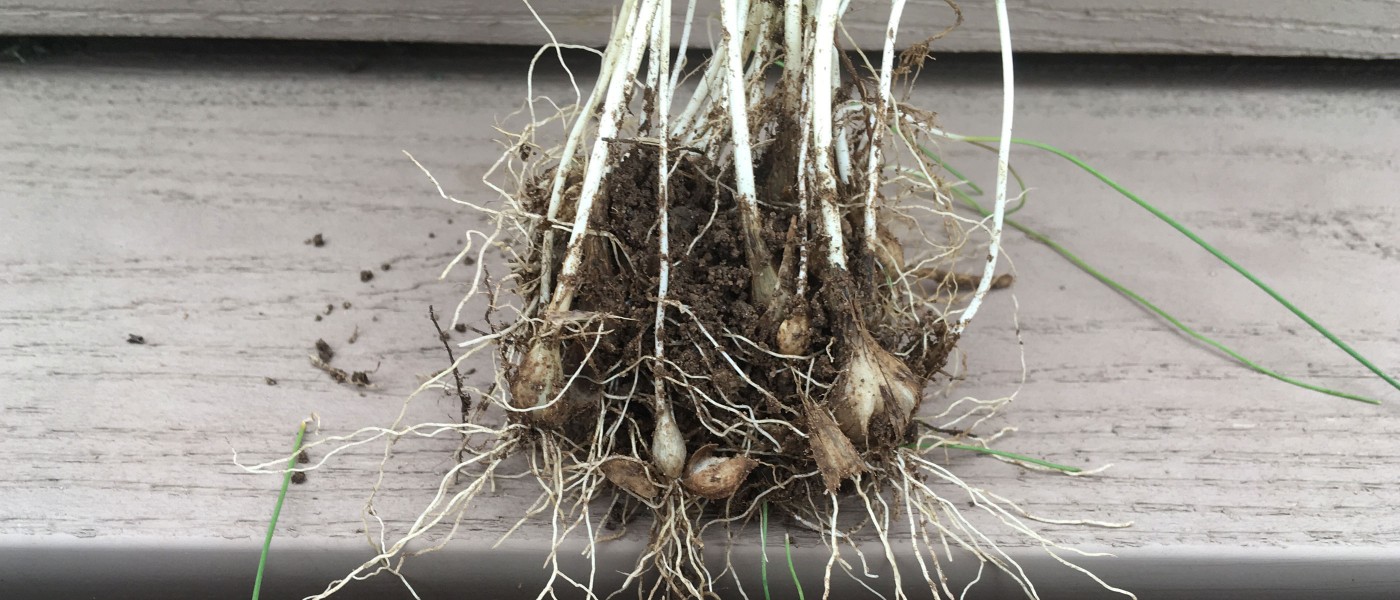Weed of the Month: Wild Garlic
Wild garlic (Allium vineale) is one the first perennials to show up in early spring in the Northeast. Emerging from dormancy as early as late fall or winter, its growth spurt in early spring gives lawns an uneven, patchy look that turf obsessives hate. A couple of mowings will usually hinder its growth for the season, but the iconic scent of freshly mown grass may be marred by the sulfurous emissions of cut wild garlic. Where the mower doesn’t reach, its round, dark green leaves and stems can be spotted rising a foot or more along lawn edges as well as in parks and gardens, street tree beds, and even in sidewalk cracks.
Allium vineale is an introduced species to North America that grows nearly everywhere east of the Mississippi as well as up and down the West Coast. It can propagate itself through several methods, including by seeds, which occasionally develop from the white or purplish flower clusters, and aerial bulblets that form at the tip of the stem. But by far the most successful way wild garlic reproduces is by its underground bulb and offsets. Though the green part of the plant goes dormant in summer, the bulb and its many babies remain, waiting for conditions to turn favorable for sprouting. When I moved to a new house a few years ago, I inadvertently populated all my new beds with wild garlic, brought over with favorite perennials from my old garden. I now have this tall, stinky interloper emanating out into the yard from nearly every plant I transplanted.
Unlike the native woodland delicacy ramps and other amaryllis family cousins cultivated for beauty and food, wild garlic is considered a noxious weed by the USDA. Its pungent flavor and smell can contaminate dairy and other livestock products as well as grains harvested with it. Some foragers include the hollow, chive-like leaves and white bulbs on their lists of wild foods, but others report a strong flavor and nasty aftertaste and disparage wild garlic’s culinary uses. (Wild edibles experts also warn foragers to beware of the toxic look-alike, star-of-Bethlehem, Ornithogalum umbellatum, which can be distinguished by its lack of garlicky scent when bruised.)
Though a threat to agriculture, for home gardeners, wild garlic’s offensiveness is essentially visual and olfactory. It prefers somewhat acidic soil, so raising your soil’s pH may deter an infestation over the long term, especially among lawn grasses, which grow better in nearly neutral soils and might crowd it out. Otherwise, the best way to control it is to dig up the entire clump and dispose of it in the trash, unless you have a reliably hot compost pile that will destroy the bulbs’ viability. Fortunately, wild garlic doesn’t hurt anything, so if you can stand its scraggly clumps in your yard and flower beds for a few months in the spring, it will go dormant and you can ignore it!


